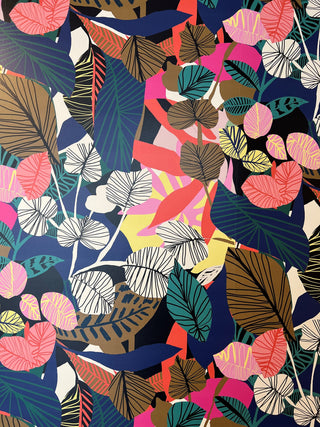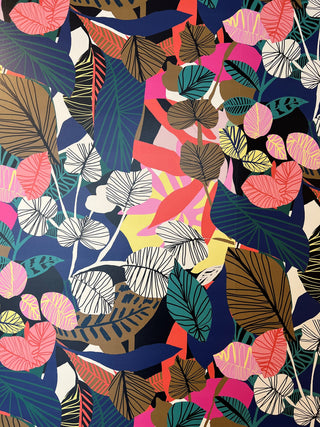If you’ve been shopping for an engagement ring, you no doubt have heard the term “lab-grown diamonds” bantered around. Your friends have purchased lab-grown diamond engagement rings. They told you all about their shopping experience: they chose a stunning ring setting and for their center stone, they were able to view several options in their budget and desired shape...and voila! The jeweler put the two together to form their dream ring.
But you have questions. What exactly does lab-grown diamond mean? They are widely promoted as a sustainable option. Are they? Some jewelers even say they are the same as natural mined diamonds, the only difference is they are cheaper. Is that true? Is a lab-grown stone a real diamond? What do you need to know before you buy lab-grown diamonds? This article presents some of the most frequently asked questions we get on this topic and the most up to date information we have at the present time.
What is a lab-grown diamond?
A lab-grown diamond is a diamond that is created in a factory setting as opposed to natural diamonds which are obtained through diamond mining in the earth. They are referred to in the diamond industry by the following terminology:
-
Lab-grown diamond
-
Laboratory-grown diamonds
-
Lab-created diamonds
-
Man-made diamonds
-
Lab-grown stone (but this can refer to various gemstones as well)
How are lab-grown diamonds created?
There are varying processes to create lab-grown diamonds such as CVD (which stands for chemical vapor deposition) or HPHT (high pressure high temperature) treatment. In a nutshell, diamond producers use highly specialized machinery to mimic the conditions found in the earth’s crust to create diamonds using a diamond seed.
Are lab-grown diamonds real diamonds?
Lab-grown diamonds have the same physical, optical and chemical properties as diamonds formed in the earth. They are diamonds. At Perrara, we avoid using terms like “real diamond” and stick to their proper terms. Natural mined diamonds for those that are mined out of the earth, lab-created diamonds for those that are grown in a laboratory or factory setting.
Are lab-grown diamonds conflict-free?
Yes, lab-grown diamonds are always conflict free! Because they're grown in a lab under controlled conditions, you can be certain they are never involved in conflict, violence, or war.
Are lab-grown diamonds mining-free?
Lab-created diamonds have been promoted as better for the environment, sustainable, eco-friendly and better for earth as no mining is involved. But is that the case? No. They are not mining-free. To produce and grow lab-created diamonds, you need base materials like methane, graphite and hydrogen. These components still need to be be mined from our earth. If mining went away tomorrow, so would lab-grown diamonds. Further to that, the mining of some of these required elements is highly detrimental to our earth. For example, the mining of methane, needed to grow lab-grown diamonds, is one of the leading causes of climate change. If you are considering a lab-created diamond because you’ve been told they are “better for the environment because no earth was moved”, in the spirit of true transparency, that is simply not accurate.
Are lab-grown diamonds the same as Moissanite or other diamond simulants?
No. Lab-grown diamonds have the same chemical properties and make up as mined diamonds. Moissanite, cubic zirconia, gemstones and other diamond simulants do not share the same atomic structure.
How are diamonds priced?
Diamonds, whether natural mined diamonds or lab-created diamonds, are priced based on the following factors:
-
Carat
-
Clarity
-
Color
-
Cut
-
Shape
The above unique characteristics are combined to provide the overall quality and then a price is arrived at based on those identifiers.
Why are laboratory-grown diamonds less money?
The origin of a diamond dramatically impacts it’s value. Natural mined diamonds that come out of our earth have been formed by nature, in the earth’s crust, over millions of years. Each and every one is unique, like a snowflake. This makes them rare, there is a finite supply.
In contrast to natural stones, laboratory-grown diamonds can be produced without limit. The supply chain is endless. This makes them subject to falling prices and next to no resale value. They are sold for a dramatically lower price compared to natural stones from the earth.
It is important to note that when it comes to value and retaining value long-term, natural mined diamonds and lab-grown diamonds are NOT the same.
Will a man-made diamond get cloudy or break?
Man-made diamonds will not get cloudy or lose their sparkle over the years. As diamonds, however, they are susceptible to damage. Although a diamond (natural or lab-grown) is one of the hardest substances, they are also the most unyielding. This means that a diamond will chip or break before it will give. No matter where you buy a diamond, and regardless of whether it is a natural mined stone or lab-grown, insurance should be purchased to protect you from accidental damage. An engagement ring is one of those pieces of jewelry that is worn day in and day out and damage can occur to any piece of fine jewelry!
Specialized insurance for your diamond engagement ring can be purchased at Jewelers Mutual. You will be protected against theft, loss, damage and even mysterious disappearance. It is highly recommended!
Are all lab-grown diamonds perfect and without flaws?
No, not at all. Like natural stones, laboratory-grown diamonds also have inclusions (or flaws, imperfections). They are graded the same as natural diamonds so a certified lab stone that is graded as an I1 for example, will likely have inclusions that are visible to the naked eye.
Do all lab-grown diamonds come with a grading report?
Most do, yes. It is something that should accompany any lab-grown diamond. The two main grading houses at the moment are IGI (short for International Gemological Institute) and GIA (Gemological Institute of America). This means that the lab-grown stone was sent to one of these laboratories and independently certified by gemologists for carat weight, clarity, color, cut (dependent on the diamond shape) and laser inscription. If you are going to buy lab-grown diamonds, be sure they have a grading report!
As of the writing of this article, IGI grading reports are provided in a physical format whereas GIA certified lab-created diamonds have a digital report.
Can I get a diamond grading report for my lab-grown diamond after it has been set into the engagement ring?
It’s not ideal to have it done after the fact. The diamond will have to be removed from the engagement ring setting and sent to IGI or GIA. This will cause undue stress on the prongs of your ring.
In your professional opinion, should I buy lab-grown diamonds?
This is such a tough thing for a jeweler to answer. I believe that lab-created diamonds offer another choice to a person searching for their dream engagement ring. It allows you to purchase a larger diamond for a lower price...and that’s a great option to have! At the same time, I think it’s important to understand that you are not buying the “same thing” as a natural mined diamond. You’re purchasing a man-made diamond that is unlikely to hold it’s value long-term. To that many people would reply “I’m not buying a lab-grown diamond because it’s a good investment, I’m buying it because I’m in love!” And that’s a wonderful way to look at it if you are solely concerned about the emotional component behind the purchase. But if you are the type of person who is interested in resale value in the long run, a lab-created diamond is likely not the right purchase for you. Only time will tell a lab-created diamonds worth.
At Perrara, we encourage the discussion. Our goal is to help you narrow down the right purchase for your personality, budget, lifestyle and belief system. There is no right or wrong here, just what is best for you & your beloved. We will take as much time as needed so that you can make an educated decision that you will feel good about.
Can I get a lab-grown colored diamond?
Yes, absolutely! Lab-grown diamonds are available in a variety of colors, just like natural mined diamonds. Colored diamonds may be a bit more searching to locate but we’re happy to do the research and find you some amazing options!
In Summary:
An engagement ring, fine jewelry and even diamond studs are an emotional purchase. You’re not buying a piece of jewelry: you’re buying a gift to celebrate a milestone anniversary. A push present to commemorate the birth of your first child. Our best advice is not to get bogged down in the minutia of each tiny detail. Instead, focus on what is important to you and head in that direction. Your jeweler should be a resource, a sounding board to help you arrive at the perfect purchase. Ultimately, whether you choose a natural mined diamond or a lab-grown diamond, take the time to get a bit of education. You’ll be glad you did!
With Love, Perrara
Author: Lisa Maloney, Proprietor




